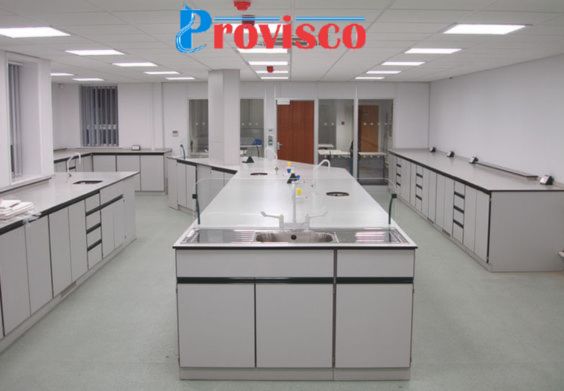Laboratories are at the cutting-edge of scientific innovation and discovery. From chemical research to pharmaceutical analysis, laboratories require furniture designed specifically to stand up to scientific rigor while still supporting efficient processes. Lab furniture manufacturers combines science and art, where fine craftsmanship meets scientific precision – this blog explores this realm to reveal this complex dynamic between function and form.
Craftsmanship of Laboratory Furniture
Designers of lab furniture are true artists in their own right. To craft furniture that serves its intended function and adds aesthetic value to a laboratory space, furniture makers need to balance innovative creativity with extensive material knowledge, design principles, and practical considerations. When done well, furniture not only performs its duty but also contributes to its beauty and enhances overall laboratory aesthetics.
Craftsmanship begins with selecting quality materials. Furniture designed specifically for lab environments must withstand temperature extremes, chemical exposure and continuous use and wear; manufacturers often opt for high-grade stainless steels, phenolic resins or laminates with chemical resistance as these provide strong yet corrosion resistant construction that’s simple to keep clean.
Furniture design is an art in itself; lab furniture doesn’t focus solely on functionality but should also accommodate ergonomics, efficient space utilization and reduce clutter. Each workstation, cabinet and storage device must be meticulously constructed in order to maximize efficiency while decreasing clutter in lab environments. Furniture designers work in close cooperation with researchers and scientists in creating customized solutions tailored specifically for them.
Science of Lab Furniture Manufacturers
Craftsmanship remains key when manufacturing laboratory furniture; however, technology plays an integral part. Laboratories need furniture that adheres to stringent safety standards while precision remains key for precision research environments such as laboratories.
Safety Standards: Laboratories can be dangerous environments; furniture in these laboratories should adhere to safety standards to protect researchers and ensure research projects run as intended. Manufacturers must make certain their products conform with or surpass regulations regarding chemical spill resistance as well as fire and electrical safety.
Ergonomics: Furniture designed specifically for laboratory work should incorporate ergonomic features to reduce strain on long-term workers at benches or hoods; adjustable work benches equipped with ergonomic chairs should also fall within this category of laboratory furniture; cabinet designs may also fall into this classification of laboratory furnishings.
Flexibility and Modularity: In an ever-evolving field such as science research, laboratory furniture must remain flexible enough to adapt quickly to changing requirements. Modular systems that can easily be altered or extended upon are essential in providing cost-efficient environments in which scientists conducting studies can conduct studies without creating costly environments that limit them from reaching their full potential.
Innovative Features: Laboratory furniture research has made significant strides forward by adopting novel features such as ventilation equipment integration and data port cables management into furniture pieces, in order to increase effectiveness while simultaneously creating safer working conditions and greater personal protection for its inhabitants. Such innovations enhance working environments while simultaneously increasing both efficiency and providing greater personal protection in any work zone.
Future of Laboratory Furniture Manufacturing
Technology and sustainability have both become central aspects of modern life, creating ample opportunity for laboratory furniture manufacturers. Industry pioneers are pioneering smart solutions such as IoT technology to monitor lab conditions; eco-friendly materials have also seen increased popularity with scientists realizing the significance of decreasing their environmental footprints.
Conclusion
lab furniture manufacturers are an exciting field that blends art with science. If done successfully, producing furniture that brings these disciplines together results in furniture which not only increases efficiency and security but also advances research advancement. With technological innovations pushing limits further than before, laboratory furniture makers will play a pivotal role in shaping laboratories of tomorrow.
FAQs
What can readers gain from participating?
Readers of ProviscoTech will gain insight into the creative, craftsmanship, and accuracy that goes into crafting state-of-the-art laboratory furniture as well as our high standards of quality that ProviscoTech upholds.
Why is lab furniture production both an art and science?
Laboratory furniture production combines aesthetics and design with scientific material knowledge and engineering engineering techniques in order to produce lab furniture that fulfills all relevant specifications and needs.
What can ProviscoTech do to maintain its lab quality while keeping production costs under control through furniture manufacturing?
ProviscoTech ensures high-quality laboratory furniture by adhering to rigorous quality control measures with top materials, and meeting industry needs through reliable solutions.


